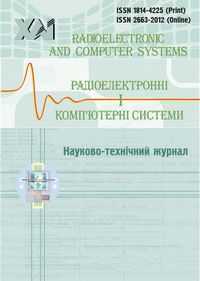Simulation of arms distribution strategies by combat zones to create military parity of forces

View/
Date
2023Author
Fedorovich, O.
Lukhanin, M.
Prokhorov, O.
Slomchynskyi, O.
Hubka, O.
Leshchenko, Y.
Metadata
Show full item recordAbstract
The problem of researching weapons distribution strategies to ensure effective combat operations in a military conflict zone is being formed and solved. The relevance of the study is related to the solution of the task of an operational-tactical nature in order to establish the military parity of forces in the conditions of the introduction of various equipment into the combat zone (CZ), which has different characteristics of combat capability from the set of warehouses and suppliers, with long supply chains. The problems that arise when establishing military parity of forces with the help of various weapons with different indicators of combat capability, the limited capabilities of suppliers, and the complications of supply logistics are analyzed. It is shown that asymmetric solutions, according to military equipment, are possible because of the use of technological innovations and high indicators of the combat effectiveness of weapons. It was concluded that the establishment of military parity of forces is possible thanks to the use of rational strategies for the distribution of weapons, which is an urgent problem in the conditions of modern hybrid warfare. Thus, this paper proposes a study of possible strategies for the distribution of weapons by CZ in conditions of threats of martial law of the country. The current study creates models that allow for the evaluation of possible arms distribution strategies, considering the diversity of military equipment, limited capabilities of suppliers, and risks associated with long logistics supply chains. Using set-theoretical analysis, methods of combinatorics, and enumeration theory, a systematic presentation of the distribution process of weapons is created. Possible strategies for the distribution of weapons by CZ to establish military parity of forces are formed and analyzed. Optimization models have been created for the rational distribution of military equipment under conditions of limited capabilities of manufacturers in terms of costs, production terms, and risks of arms supply. A simulation model is being developed to study the dynamics of the logistical process of distribution and supply of weapons in agent representation using the AnyLogic platform. Modeling allows you to analyze the impact of threats to the main indicators of the distribution and supply of weapons. An illustrative example of the distribution of weapons by CZ of a military conflict is presented. The scientific novelty of this research is related to the solution of the actual problem of the rational distribution of various military equipment by CZ in the conditions of modern hybrid warfare. The results of this study should be used for operational-tactical planning of the logistical process of distribution and supply of weapons to solve the problem of establishing military parity of forces in the CZ. Формується та вирішується задача дослідження стратегій розподілу озброєння для забезпечення ефективних бойових дій в зоні воєнного конфлікту. Актуальність дослідження пов’язана з вирішенням завдання оперативно-тактичного характеру, для встановлення військового паритету сил, в умовах надходження різноманітної техніки в зону воєнного конфлікту, з різними характеристиками боєздатності від множини складів та постачальників, з довгими ланцюгами постачання. Аналізуються проблеми, які виникають при встановленні військового паритету сил за допомогою різноманітного озброєння з різними показниками боєздатності, обмеженими можливостями постачальників, ускладненням логістики постачання. Показано, що асиметричні рішення, за військовою технікою, можливі за рахунок використання технологічних інновацій та високих показників боєздатності зброї. Робиться висновок, що встановлення військового паритету сил можливо за рахунок використання раціональних стратегій розподілу озброєння, що є однією з актуальних проблем в умовах сучасної гібридної війни. Таким чином, у роботі пропонується дослідження можливих стратегій розподілу озброєнь за зонами бойових дій в умовах загроз воєнного стану в країні. Метою дослідження є створення моделей, які дозволяють оцінювати можливі стратегії розподілу озброєння, з урахуванням різноманіття військової техніки, обмежених можливостей постачальників та ризиків, пов’язаних з довгими логістичними ланцюгами постачання. Створюється системне представлення процесу розподілу озброєння за рахунок теоретико-множинного аналізу, з використанням методів комбінаторики та теорії перерахування. Формуються та аналізуються можливі стратегії розподілу озброєння за зонами бойових дій для встановлення військового паритету сил. Створюються оптимізаційні моделі для раціонального розподілу військової техніки в умовах обмежених можливостей виробників за витратами, часу виробництва та ризиками постачання озброєння. Розроблюється імітаційна модель для дослідження динаміки логістичного процесу розподілу та постачання озброєння, у агентному представленні, за допомогою платформи AnyLogic. Моделювання дозволяє аналізувати вплив загроз на основні показників розподілу та постачання озброєння. Наведено ілюстрований приклад розподілу озброєння за зонами бойових дій воєнного конфлікту. Наукова новизна дослідження пов’язана з вирішенням актуальної проблеми раціонального розподілу різноманітної військової техніки за зонами бойових дій, в умовах сучасної гібридної війни. Результати дослідження доцільно використовувати для оперативно-тактичного планування логістичного процесу розподілу та постачання озброєння для вирішення завдання зі встановлення військового паритету сил в зоні воєнного конфлікту.
